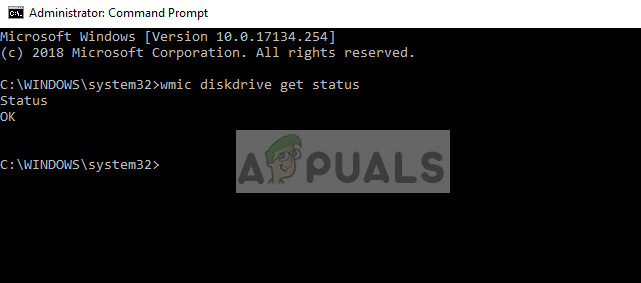Fix: The request failed due to a fatal device hardware error
The error message “The request failed due to a fatal device hardware error” indicates a critical issue preventing your system from accessing the specified storage device. This is often due to severe hardware malfunctions, such as physical damage or internal failure in the hard drive or SSD.

Common causes include bad sectors, faulty connections, and outdated device drivers. Additional issues contributing to this error may involve firmware corruption, sudden power interruptions, or the use of faulty or incompatible cables and ports.
In this article, we will discuss different ways to solve this error.
1. Verify Hard Drive Using SMART Attributes
Use Windows’ built-in SMART (Self-Monitoring, Analysis, and Reporting Technology) to check your hard drive or SSD. This tool identifies issues like bad sectors, overheating, or frequent errors that can cause hardware failure. If results show ‘Bad,’ ‘Caution,’ or ‘Unknown,’ back up your data immediately and consider repairing or replacing the drive.
- Press Windows + S, type “command prompt“, right-click the application, and select Run as administrator.
- In the command prompt, type:
wmic diskdrive get status

- If the output is normal, as shown in the image above, proceed with the other solutions.
2. Run the CHKDSK command
This issue can happen due to file errors or bad sectors on the drive, which affect its normal function. Running the ‘chkdsk’ command checks for these issues and tries to fix them, improving the drive’s stability and performance.
- Press Windows + S, type “command prompt“, right-click the app, and select “Run as administrator“.
- In the command prompt, type:
CHKDSK [volume] [/F] [/R]
[F] fixes system errors, while [R] fixes bad sectors.
- If prompted to run chkdsk after a restart, press Y and reboot.
- If no errors are found, press Windows + E, right-click the drive, select Properties, go to the Tools tab, and click Check under Error checking. Complete the process and reboot.

3. Format your Drive/Initializing
Refreshing a drive by formatting or initializing deletes all data, removing corrupted files or damaged sectors. This rebuilds the file system, helps the drive communicate better with your system, and restores it to full function.
- Press Windows + E and navigate to the drive. Right-click on it and select Format.
- Uncheck Quick format and proceed. After formatting, unplug and replug the drive to check.

- If not initialized, press Windows + R, type “diskmgmt.msc“, and hit Enter. Right-click the volume, select Initialize Disk, choose the partition type, and proceed.
 Note: If the error message persists, try the hardware on another computer. If it continues, consider replacing your hard drive.
Note: If the error message persists, try the hardware on another computer. If it continues, consider replacing your hard drive.




